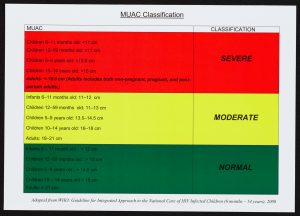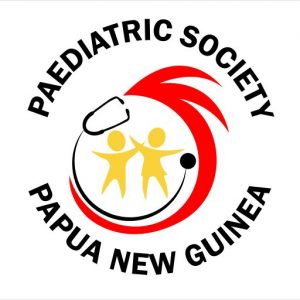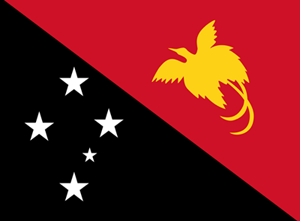PNG Standard Treatment for Common Illnesses in Children
The PNG Standard Treatment manual for common illnesses in children has been continuously in print since 1975, and is now in its 10th Edition. It is one of the longest running clinical guidelines in the world. Members of the Paediatric Society revise and update the manual every 5 years, drawing on international and local evidence and experience.
PNG Standard Treatment Book for Children 10th Edition 2016
WHO Pocket Book of Hospital Care for Children
The Pocket Book of Hospital Care for Children is a clinical guideline used in provincial and district hospital for hospital management of serious illness. The second edition was published in 2013. There is a 4-day training course that teaches staff how to use the guidelines in clinical practice. The Paediatric Society is active in training health workers in many provinces. Training is linked to other measures to improve quality of care.
Hospital Care for Children
Paediatrics for Doctors in PNG
Paediatrics for Doctors in PNG was originally written in the 1980s by Frank Shann and Professor John Biddulph. The book was revised in 2000 by Prof John Vince and Prof Frank Shann. It contains guidance on practical procedures and the treatment of many common conditions.
Download Paediatrics for Doctors
Child Health for Nurses and HEOs
This third edition of the text-book on child health for nursing and HEO schools and reference for nurses looking after children was completed in 2022.
Child Health for Nurses and HEOs in Papua New Guinea 3th Edition March 2022
PNG Standard Treatment Manual for Obstetrics and Gynaecology
These guidelines have been produced since 1986 by the O&G Society, with input from the Society of Midwives. The latest edition, edited by Professor Glen Mola, contains many updates on new treatments, and new diagnostics, including ultrasound.
PNG Standard Treatment Manual for Obstetrics and Gynaecology 7th Edition 2018
PNG antibiotic guidelines
PNG Antimicrobial Guidelines 2024
Oxygen therapy guidelines
WHO Oxygen therapy for children 2016
Bubble-CPAP guidelines 2017
Child Health Record Book
Every new baby in PNG should have a Child Health Record Book (Baby Book) for recording vaccines, weight, any illnesses and how they are treated. This is a very important book, and should be kept in a safe place and brought to the clinic at every visit. The Baby Book also contains information for parents on feeding, what signs of illness to look out for, and family planning. Weight charts are essential for growth monitoring, you can download these below.
Monitoring growth and nutrition
Weight for age chart Girls 0-5 years
Weight for age chart Boys 0-5 years
For older children monitoring growth is also important, especially in children with a chronic illness. Below are the WHO body mass index charts for females and males aged 5-19 years.
Body mass index charts 5-19 years WHO
Mid upper arm circumference (MUAC) is a useful screening test for malnutrition. The chart below shows reference ranges for different ages, so MUAC can be useful from infants to adolescents and adults. This chart was designed by the University of Rochester, adapted from WHO guidelines.

Malnutrition – guidelines and tools for management
In this section there are tools to guide management of children with severe and moderate malnutrition. The case fatality rate for severe malnutrition in PNG hospitals was 18-20%, but this has now been reduced with a systematic approach. Our target is to eliminate all preventable deaths and have the case fatality rate for severe malnutrition well under 10%.
Severe acute malnutrition PNG guidelines 2018
Management of severe malnutrition wall poster
F75 and F100 Milk feeding chart
Recipes for home-made F75 and F100
Severe Malnutrition monthly recording form
Nutrition education resources
Frangipani Friendly Clinic Healthy Plate Poster
HIV treatment guidelines
These guidelines highlight the importance of using new combination ART, given the high rates of resistance to non-nucleoside reverse transcriptase inhibitors (NNRTI).
All children should be transitioned or commenced on Dolutegravir (DTG) based therapy: Abacavir (ABC), Lamivudine (3TC) and DTG as 1st line treatment – see UPDATE Summary below.
For adolescents over 30kg, the preferred 1st line regimen is Tenofovir (TDF) + 3TC + DTG.
The new guidelines also highlights the need for regular viral load monitoring and clinical assessment to detect treatment failure.
PNG HIV care and treatment guidelines 2019
UPDATE Memo from NDoH on DTG-based therapy for children Nov 2021
UPDATE Summary of ABC 3TC DTG therapy for children and adolescents Nov 2021
Instructional video: How to Administer Lopinavir/Ritonavir Pellets to Children with HIV
Nurse Abigael Wanyana from Gertrudes Children’s Hospital in Kenya shows clearly how to give Lopinavir/ritonavir (LPV/r) pellets to children. LPV/r is part of second-line therapy for children and adolescents, and is bitter tasting, so mixing with expressed breast milk makes it palatable.
WHO guideline on management of tuberculosis in children and adolescents (2024)
WHO Management of tuberculosis in children and adolescents Module 5 2024
This comprehensive WHO guideline covers all aspects of TB diagnosis, treatment, prevention and prophylaxis.
WHO Treatment guidelines for multi-drug-resistant tuberculosis (2019)
WHO guidance on MDR Tuberculosis 2019
The MDR regimen depends on the drugs you have available and how unwell the child is. See pages 96-99 of this WHO guideline on MDR, it contains the medication doses and weight bands for children. Look at the charts, and in general choose 1-2 drugs from each class (A, B, C), until you have at 4-5 drugs.
For example:
A: Levofloxacin
B: Cycloserine
C: Ethionamide and pyrazinamide and para-amino-salicylic acid (PAS)
Avoid injectable aminoglycosides (kanamycin / amikacin) if bedaquiline or delamanid are available, to avoid IM injections and serious side-effects, especially deafness which occurs in 20% of children on long-term aminoglycosides.
Child protection, maltreatment and gender-based violence
Child maltreatment clinical handbook WHO 2022
Sexual and gender-based violence clinical guideline 2021
1-Tok-Kaunselin Helpim Lain Service Provider Directory 2017
Paediatric Cancer Protocols
Click here for more details of the PNG paediatric cancer protocols, developed by Dr Gwenda Anga.

